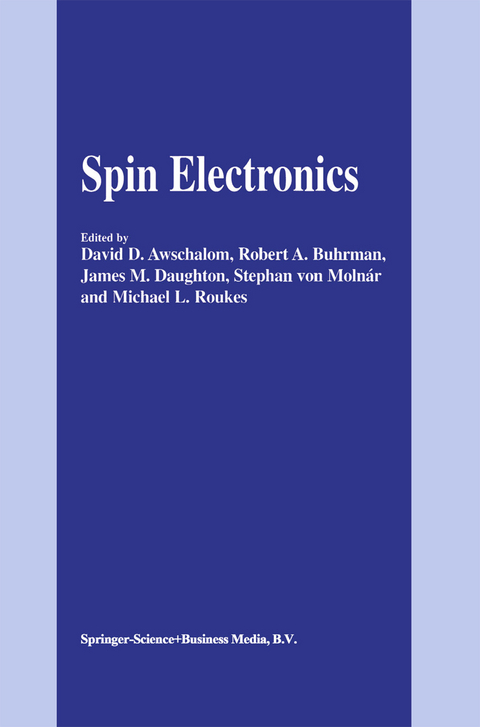
Spin Electronics
Springer (Verlag)
978-90-481-6513-1 (ISBN)
1. Spin Electronics—Is It the Technology of the Future?.- 2. Materials for Semiconductor Spin Electronics.- 3. Fabrication and Characterization of Magnetic Nanostructures.- 4. Spin Injection, Spin Transport and Spin Transfer.- 5. Optoelectronic Manipulation of Spin in Semiconductors.- 6. Magnetoelectronic Devices.- Appendices.- A. Appendix A. Biographies of Team Members.- B. Appendix B. Site Reports—Europe.- Johannes Kepler University.- Unité Mixte de Physique CNRS/THALES.- INESC.- RWTH Aachen.- University of Hamburg.- University of Twente.- University of Basel.- University of Wuerzburg.- University of Hamburg.- IMEC.- QinetiQ.- Trinity College.- Imperial College of Science, Technology and Medicine.- University of Cambridge.- University of Cambridge.- University of Glasgow.- University of Nottingham.- University of Regensburg.- C. Appendix C. Site Reports — Japan.- University of Tokyo.- The Institute for Solid State Physics.- Tokyo Institute of Technology.- Tokyo Institute of Technology.- Waseda University.- Tokyo Univ. of Agriculture and Technology.- Kanagawa Academy of Science and Technology (KAST).- Tokyo Institute of Technology.- Fujitsu Laboratories Ltd..- NTT Basic Research Laboratory.- NEC Fundamental Research Laboratories (FRL).- Joint Research Center for Atom Technology (JRCAT).- Japan Advanced Institute of Science and Technology.- University of Tokyo, Department of Physics.- University of Tokyo, Department of Electrical Engineering.- The Institute of Scientific and Industrial Research.- Osaka University.- Tohoku University, Research Institute of Electrical Communication (RIEC).- Tohoku University, Department of Applied Physics.- Tohoku University, Department of Materials Science.- Tohoku University.- D. Appendix D. Highlights of Recent U.S. Research andDevelopment Activities.- E. Appendix E. Glossary.- F. Appendix F. Index of Sites.
| Erscheint lt. Verlag | 1.12.2010 |
|---|---|
| Zusatzinfo | XXIV, 198 p. |
| Verlagsort | Dordrecht |
| Sprache | englisch |
| Maße | 155 x 235 mm |
| Themenwelt | Naturwissenschaften ► Geowissenschaften ► Geologie |
| Naturwissenschaften ► Geowissenschaften ► Meteorologie / Klimatologie | |
| Naturwissenschaften ► Geowissenschaften ► Mineralogie / Paläontologie | |
| Naturwissenschaften ► Physik / Astronomie ► Atom- / Kern- / Molekularphysik | |
| Naturwissenschaften ► Physik / Astronomie ► Elektrodynamik | |
| Naturwissenschaften ► Physik / Astronomie ► Festkörperphysik | |
| Naturwissenschaften ► Physik / Astronomie ► Thermodynamik | |
| Technik ► Elektrotechnik / Energietechnik | |
| Technik ► Maschinenbau | |
| ISBN-10 | 90-481-6513-X / 904816513X |
| ISBN-13 | 978-90-481-6513-1 / 9789048165131 |
| Zustand | Neuware |
| Informationen gemäß Produktsicherheitsverordnung (GPSR) | |
| Haben Sie eine Frage zum Produkt? |
aus dem Bereich


